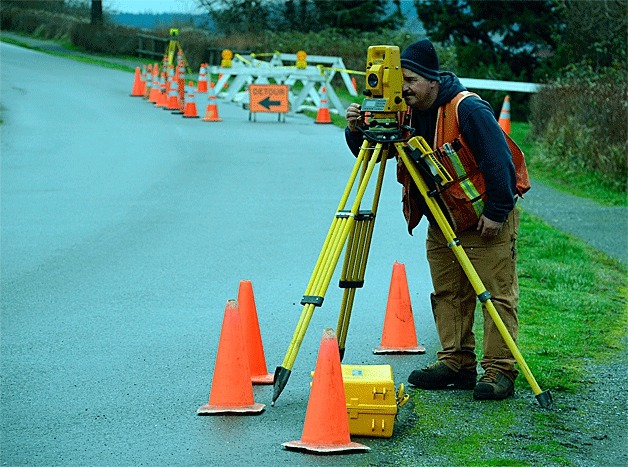Steady erosion over the next 50 years may damage portions of Front Street as well as dent the town’s pocket book.
Fixing a problem area of about 400 feet now may cost Coupeville as much as $260,000, according to a town-hired consultant.
Associated Earth Sciences, a Kirkland-based geotechnical engineering firm, recently released a geologic hazards assessment of the entire North East Front Street marine bluff area.
The report was initiated following sudden erosion between North East Clapp and Gould streets this past January.
Along with an explanation of why the area is eroding – largely the result of wave action – the analysis noted cracks in the street’s pavement at five points along the street, some of which “are suggestive of possible deeper-seated slope movements in those areas.”
The firm estimated bluff erosion at about five centimeters a year.
That tabs out to more than eight feet by 2063, but damage to the street will most likely be the result of a series of small slides, according to the report.
“Given the historical and projected bluff retreat rate for the project area and the presence of relatively weak fill soils along much of the bluff, it is our opinion that the risk of landslide-related damage to the roadway within a 50-year time period is moderate to high,” the report said.
“As previously discussed, bluff retreat is not typically a gradual process, but rather occurs as a result of episodic landslide events,” it said.
In January, a section of bluff between North East Clapp and North East Gould streets began to rapidly erode and threaten a gravel sidewalk.
The consulting firm was hired to evaluate the situation, determine why the erosion was occurring and come up with possible solutions.
Coupeville Mayor Nancy Conard said Monday the report made clear several things; it’s unlikely the bluff will collapse tomorrow but the unexpected headache will be a long-term problem.
“There is no question erosion is going to continue,” Conard said.
The firm recommended the problem be tackled with a stabilization technique that uses soldier piles.
Basically a retaining wall, long “H” beams are pounded vertically into the ground and boards are stacked horizontally between the trees of the posts.
The report also suggests the installation of eight monitoring stations along that section of Front Street.
They would provide statistical evidence and early warning of pending ground-surface movement or instability of the bluff.
According to the report, stabilizing the 50-foot area between Clapp and Gould alone would cost $50,000. Every additional 50 feet would cost $30,000 – totaling $260,000 for the 400-foot study area – but only if all the work is done at once.
Doing all of Front Street between Gould and North Main streets would run over $1 million.
Cost of the monitoring was not estimated in the study.
Conard said this was not a planned expenditure and the town simply doesn’t have the money to do everything.
The consulting firm was asked to look at less expensive alternatives, such as soft-shore armoring, another erosion warding technique that uses vegetation and driftwood.
The issue was planned for discussion at a town council workshop Tuesday but the meeting was after press time and could not be reported on.
Conard said no decisions were expected to be made at the meeting but it’s hard to predict how the issue will ultimately be resolved.
The bluff might be shored up with one or various stabilization techniques and the monitoring stations installed.
It could also be the the problem is mitigated by turning parts of Front Street into a one way.
What is clear is that January’s erosion surprise will be an issue dealt with over years and will require both attention and resources.
“This thing really took the lid off a big can of worms,” Conard said.



